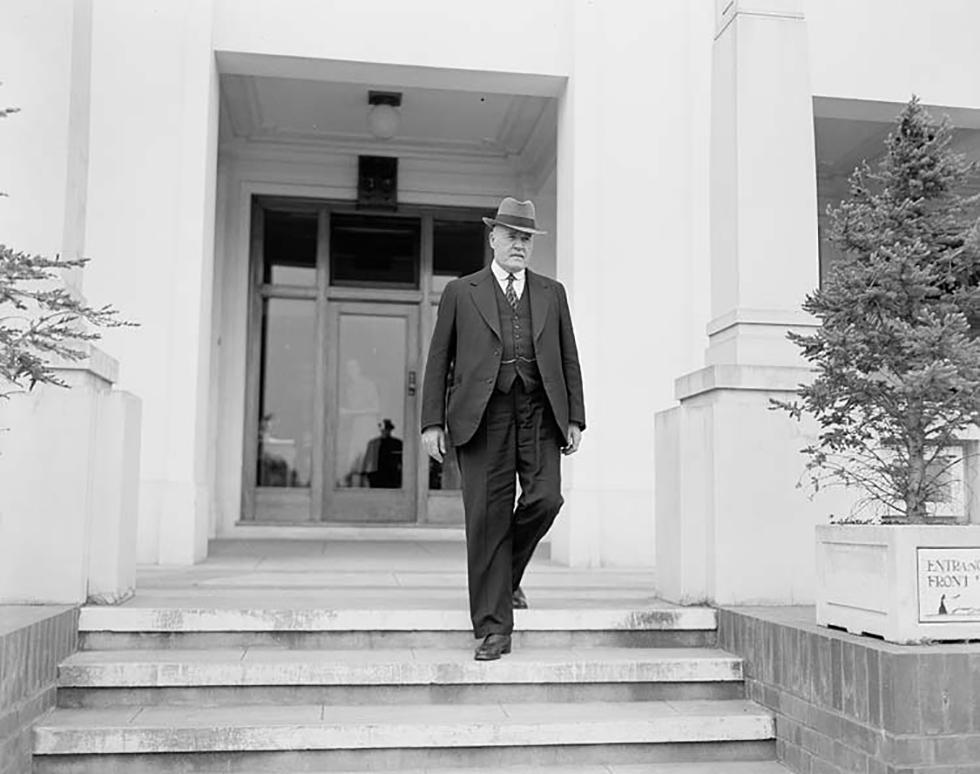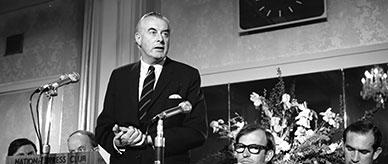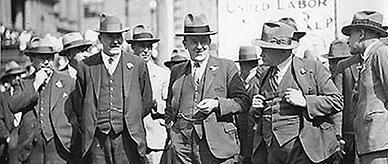


About the record
This black-and-white photograph shows the Honourable John Thomas 'Jack' Lang in 1946, walking down the steps from the members' entrance of (Old) Parliament House in Canberra during his single term as member for Reid in the federal House of Representatives. He is wearing a dark three-piece suit and a hat. He looks down at the camera and is unsmiling. Seen behind him is the private entrance to the members' offices.
Educational value
-
This photograph of Jack Lang (1876–1975) was taken soon after his election to the House of Representatives seat of Reid (New South Wales) in September 1946. He was elected as the sole representative of the Lang Labor Party, which he had formed after being expelled from the Australian Labor Party (ALP) in 1943. Although he only had a minority of primary votes, he won the seat with Liberal preferences, much to the disdain of New South Wales ALP officials and most federal ALP
-
During his single term as the member for Reid (1946–49), Lang was a harsh critic of the Labor government and in particular its leader, Ben Chifley, in the parliament and through his own newspaper, The Century. Long a critic of federal Labor and resentful of Chifley's leadership, he attacked the government's policies, in particular its immigration policy and plan for bank nationalisation, claiming communists were infiltrating government departments.
-
The photograph portrays Lang as a solitary but imposing figure, characteristics that epitomised his image in public life and his leadership style. His height of 193 centimetres earned him the nickname 'the big fella' and his forceful speaking style enabled him to intimidate and subdue opposition. He always dressed with care, in three-piece suits and, at least in his earlier career, watch and chain. While cultivating many followers he was essentially a loner with few intimates.
-
Lang was a divisive figure within the ALP while a member of the party, and more specifically as a politician. His abrasiveness, stubbornness and ferocity became legendary during his career in state politics. He was constantly involved in ideological disagreements with other ALP politicians and led an alternative labour party three times. In 1931 the federal members of his Lang Labor Party brought down the Scullin federal ALP government.
-
Lang is shown here during the last phase of a long, influential and contentious political career that included two terms (1925–27 and 1930–32) as Labor premier of New South Wales. During his first term he gained popular support with widows' pensions and workers compensation reforms. The worst years of the Great Depression occurred during his second term, and in the early 1930s he fought with federal governments over financial issues. In 1932 he was dismissed by the state governor for refusing to obey federal law on the payment of interest. He is the only premier to have been dismissed by a governor.
Acknowledgments
Learning resource text © Education Services Australia Limited and the National Archives of Australia 2010.
Related themes
Need help with your research?
Learn how to interpret primary sources, use our collection and more.


